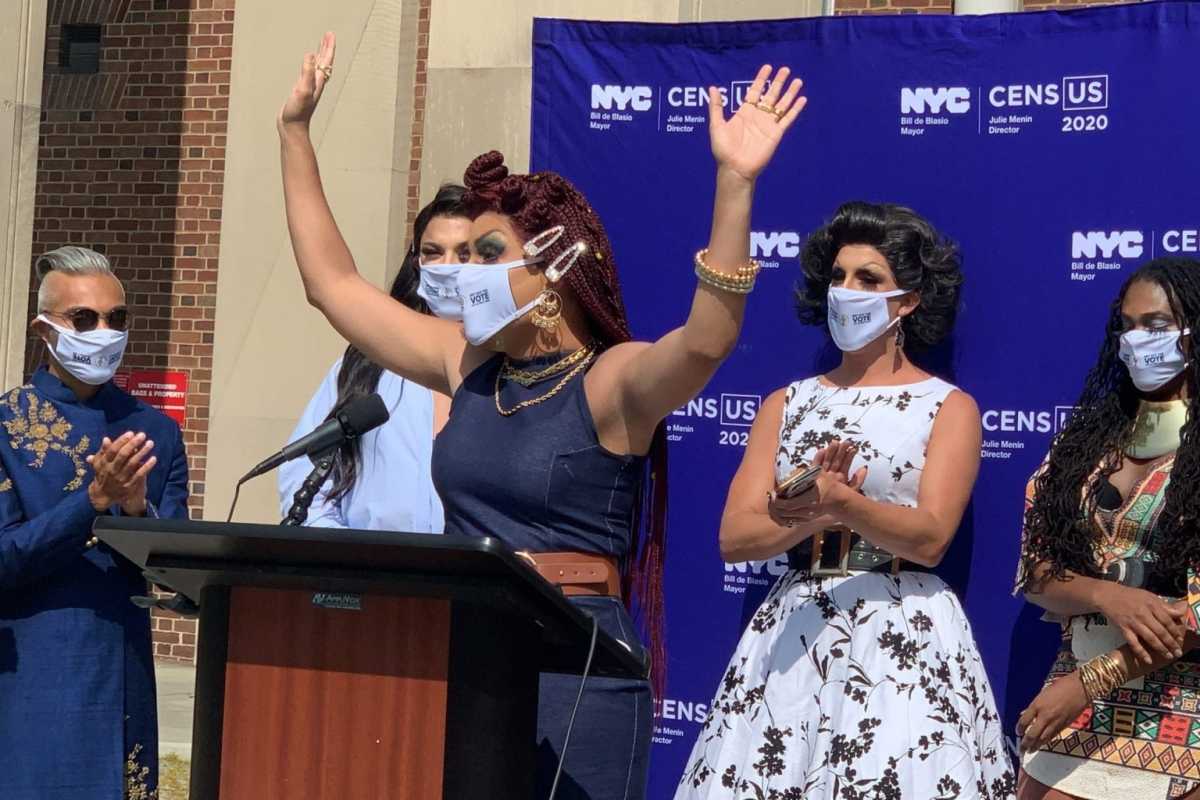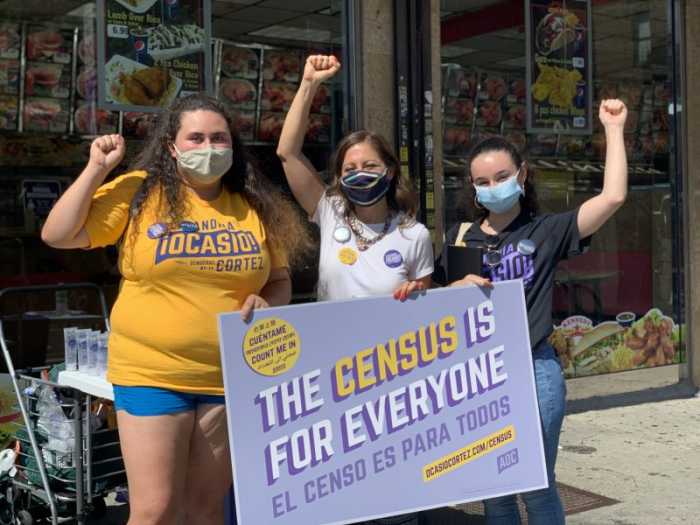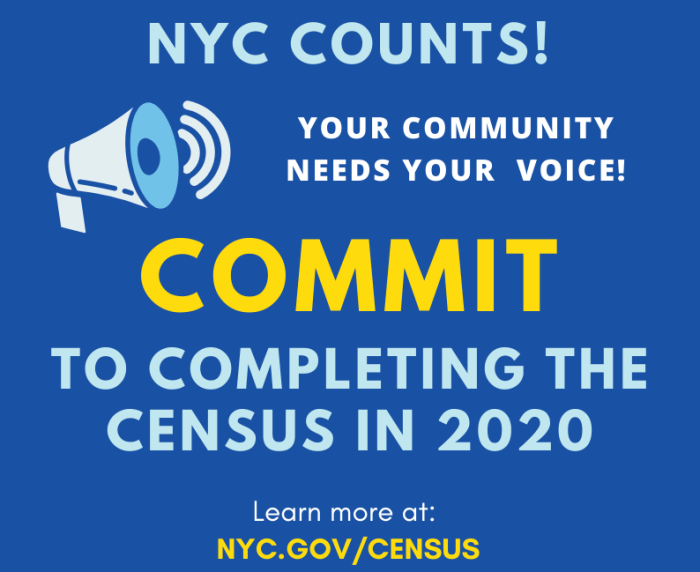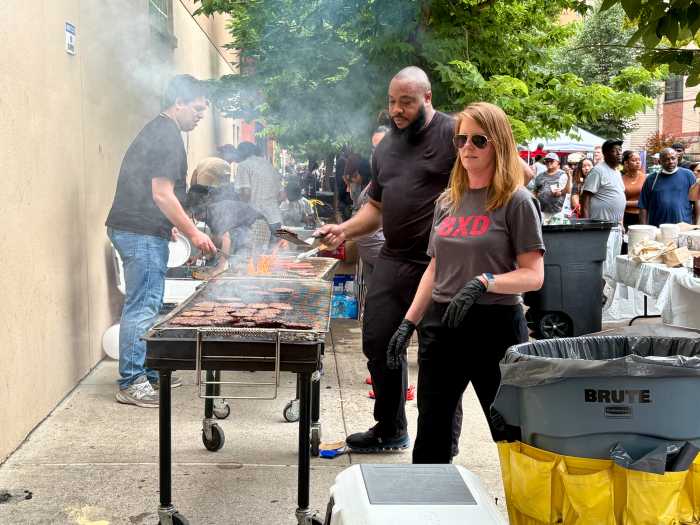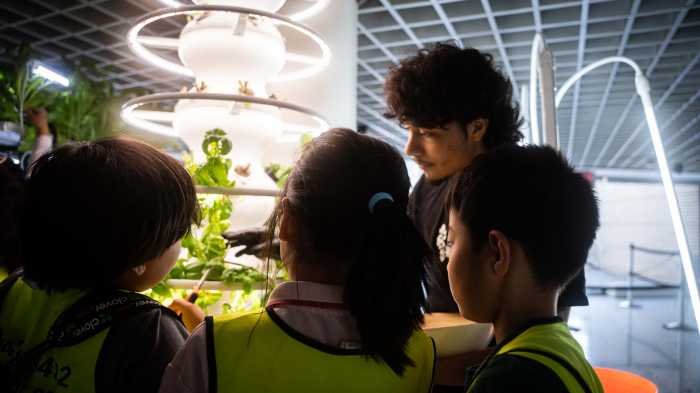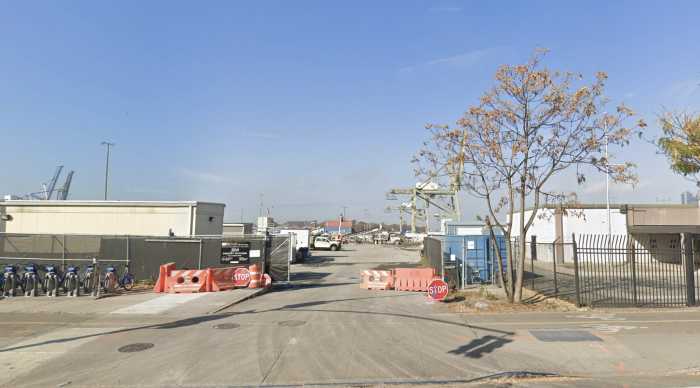For the next week, five New York City drag queens will use their social media influence to get out the count for the 2020 Census in their respective boroughs before the looming pushed up September 30 deadline. The queen whose borough ends the week with the highest self-response increase will be “crowned” the “Census Queen.”
“They’re going to do everything they possibly can to ensure that the borough’s they represent, that the people in the boroughs they represent are counted,” said Amit S. Bagga, Deputy Director of NYC Census 2020, the Mayor’s Office of the Census, at a press conference on Tuesday outside of Queens Borough Hall. “They’re going to get out the LGBTQ count in those boroughs. They’re going to get out the immigrant count in those boroughs. They’re going to get out the straight old man count in those boroughs. They’re going to get out all the count in the borough.”
Bronxite Godiva Romance, Staten Islander Britney Virazzano, Brooklynite Ruby Roo (Brooklyn), Manhattanite Pixie Aventura, and Queens’ very own Audrey Phoenix are all vying for the royal title.
“I filled mine out in like six minutes. I didn’t skip any questions either –– but you can if you need to. Thirteen languages so if you don’t speak English, it’s okay,” said Phoenix.
While the contest, which is called “Calling All Queens: Get out the LGBTQIA+ Count,” is focused on increasing the city’s self response rate overall, it is also focused on getting more people in the city’s LGBTIA+ community counted in the census.
“Queens matters, queers matter, representation matters,” said City Councilmember Jimmy Van Bramer (D-Sunnyside, Woodside, Long Island City, Astoria, Dutch Kills), a member of the council’s LGBT caucus.
There was no openly queer representation in the city’s government for 300 years, he said. Now there is. The LGBT community was invisible and now it isn’t. Being counted in the census is one of the ways the community can keep advocating for themselves, he said.
“It’s so important that we absolutely continue to be counted, represented, and funded in ways that make sure that we are getting LGBTQ nonprofit organizations funded, advocacy organizations funded, health care services funded,” Van Bramer said. “All of those things that we’ve always needed, but no one ever thought was important because we didn’t matter. We were invisible to them. But we always mattered, we were always a community, we were always a people.”
The 2020 Census is the first census to count same-sex households. But the gender question is limited to only male or female answers drawing criticisms that it should be more inclusive and include non-binary options. However, the Census Bureau has said it will accept and count submissions where the gender question has been left blank.
Calling all Queens is one of multiple efforts happening around the city to increase the city’s self-response rate for the 2020 Census and prevent an undercount. Local organizations, lawmakers, and even candidates running for office have been handing out fliers, attending food distributions and other events to encourage as many people as possible to fill out the short survey.
They are trying to overcome logistical complications and delays caused by the COVID-19 pandemic, fear amongst immigrants stoked by the Trump administration’s attempts to add a citizenship question to the census and to discount undocumented immigrants from apportionment, general distrust in government, and a lack of understanding and awareness of what the census is and what it means for daily life.
Funding for hospitals, schools and public transportation all come from census data, said State Senator Jessica Ramos (D-Corona, East Elmhurst, Elmhurst, Jackson Heights, and parts of Astoria and Woodside).
“These are all things –– parts of our lives –– that depend on federal dollars,” she said. “And when we have, you know, a president that isn’t responsive to the needs of New Yorkers –– and that really came through during this pandemic –– We have to understand and take our own personal responsibility in ensuring all of our loved ones are filling out the Census, and making sure that we are bringing back those dollars home.”
New York City has a history of being undercounted in the census. The city finished the 2010 Census with a 64% response rate. According to data from the 2020 Census, New York City currently has a 60.2% response rate.
Staten Island is leading the five boroughs with a 65% self-response rate. Manhattan is in second place with a rate of 61.4%, followed closely by Queens, then Brooklyn and finally the Bronx.
“It does cost us,” said Acting Queens Borough President Sharon Lee about an undercount. “Not just in representation, but in real resource dollars.”
According to Lee, each person not counted in the 2020 Census represents about $3,000 in federal funding. If 1% of Queens, approximately 24,000 people, do not respond to the Census, the borough stands to around $72 million in federal dollars, she said.
The Census is powerful, she said. It grants representation in Washington D.C., provides funding for everyday necessities and makes sure that everyone is accounted for. That’s why the Trump administration has tried to weaponize it.
“Trying to put citizenship questions on it, changing the deadline and changing it back, all sorts of shenanigans,” she said. “That is a testament to how powerful the Census is.”


